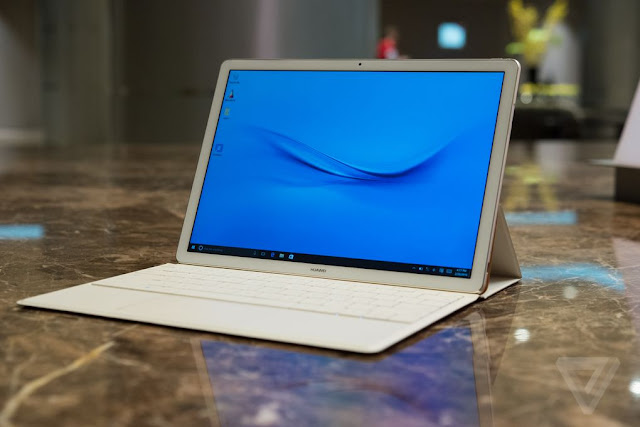CES was full of new 2 in 1, 12" Windows tablets. Sadly, the budget-friendly Toshiba Dynabook makes way too many compromises to hit its low price while staying super thin and light.
Now it's Mobile World Congress time, and surprise! More 12" 2 in 1s. Huawei is more known for phones and the tablet looks like an overgrown phone in a good way. It's very thin and light with nice rounded edges, and it's the same thickness as an iPhone 6.
There are some questions as to what the pen technology is (Wacom AES? Synaptic?), but there's definitely an active pen available as an accessory. Oh, and the pen has a laser pointer. That should keep your
Even the lowest configuration comes with an Intel core m3, vs the atom in the DynaPad, so hopefully, performance will be more than adequate.
For more information and some amazing photos from hands on time at MWC, check out the Verge article.







